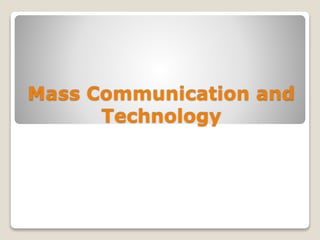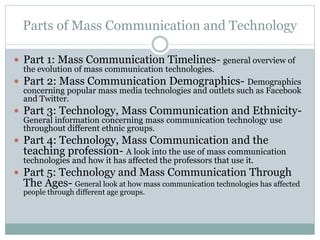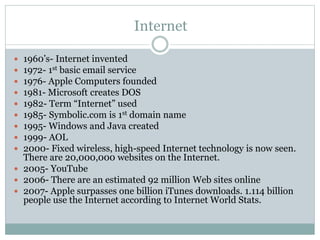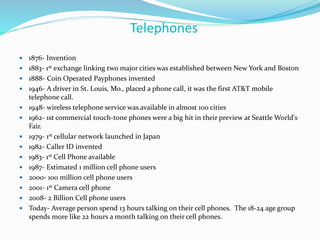This document discusses the history and evolution of various mass communication technologies such as the internet, telephones, and television. It provides timelines showing key developments in each technology from their invention to modern usage. The internet allowed global connectivity and instant information sharing. Telephones evolved from landlines to widespread cell phone adoption. Television became a nationwide medium and new platforms now deliver content on multiple devices. Overall, mass communication technologies have connected society, spread information rapidly, and affected how people interact with each other and access resources.





























